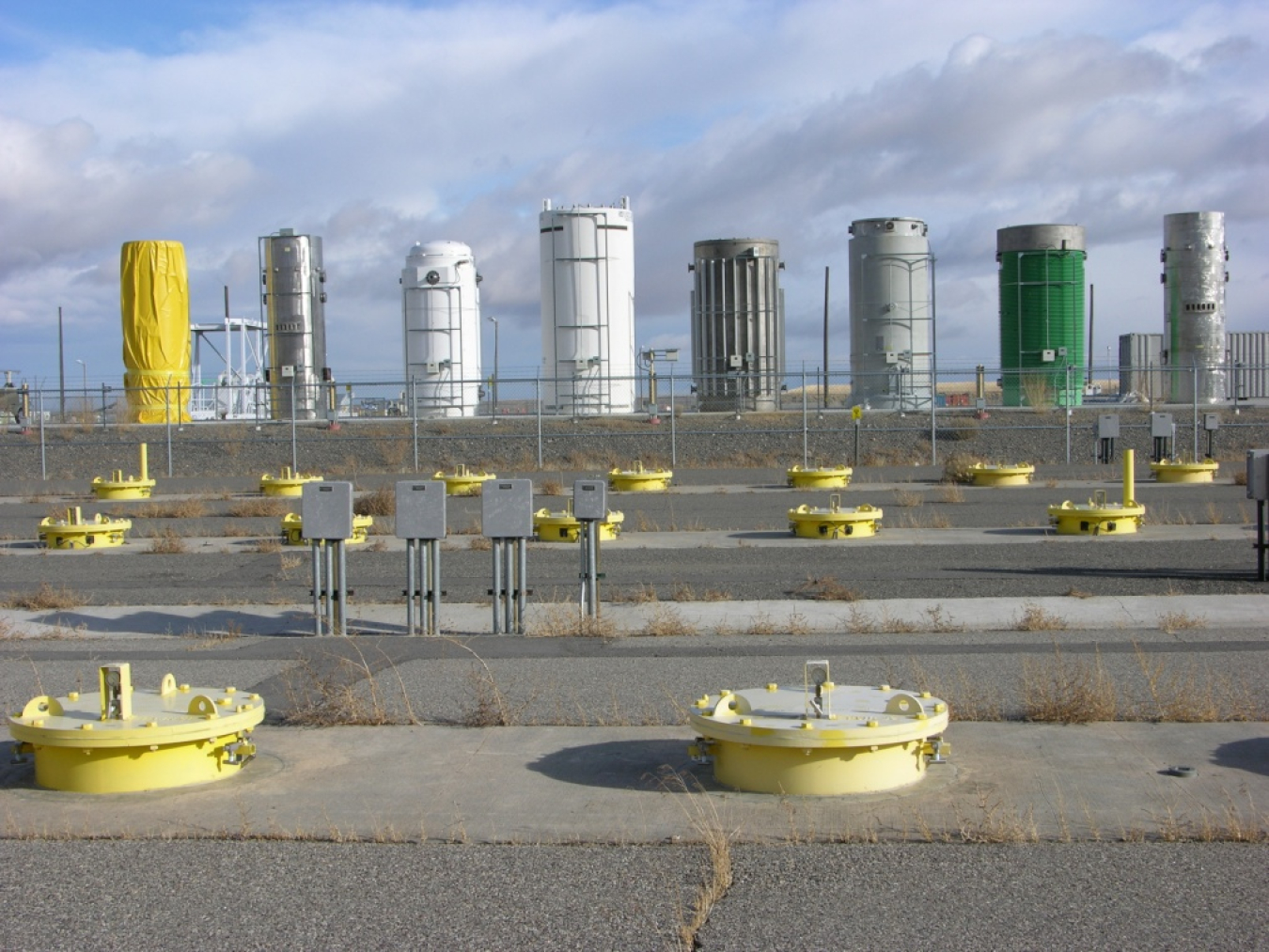
Dry storage casks and in-ground storage vaults at Idaho National Laboratory have been safely housing spent nuclear fuel for decades.
The Nuclear Waste Policy Act of 1982 defines Spent Nuclear Fuel (SNF) as fuel that has been withdrawn from a nuclear reactor following irradiation, the constituent elements of which have not been separated by reprocessing. Note that some fissionable materials which have been irradiated and withdrawn from a nuclear reactor may be determined not to be fuel, although they are currently being managed as SNF. DOE is expecting to provide clarification in the near future for the management and disposition of these materials.
EM is currently managing approximately 2,450 metric tons of heavy metal (MTHM) of SNF at three sites, including 2,128 MTHM at the Hanford Site in Washington; 27 MTHM at the Savannah River Site (SRS) in South Carolina, and 285 MTHM at the Idaho National Laboratory (INL) in Idaho. (Some of the INL-managed SNF is stored at the Fort St. Vrain Independent Spent Fuel Storage Installation in Colorado.) The majority of this fuel (87% by volume) is dry-stored.
EM’s mission includes safely and efficiently managing its spent nuclear fuel and preparing it for disposal in a geological repository, or otherwise safely removing it from the inventory. SNF has intrinsic value that is recognized by DOE and many others in the nuclear industry. For this and other factors, SNF is stored and protected differently than radioactively contaminated waste. This is done, in part, to enable recovery of the intrinsic value of SNF should a decision be made to do so. Note that the Nuclear Waste Policy Act (NWPA) deals with both high-level radioactive waste (HLW) and SNF. Including SNF in the NWPA as being nuclear waste is correct, because for this SNF, a decision would have been made that its intrinsic value was no longer worth recovering.
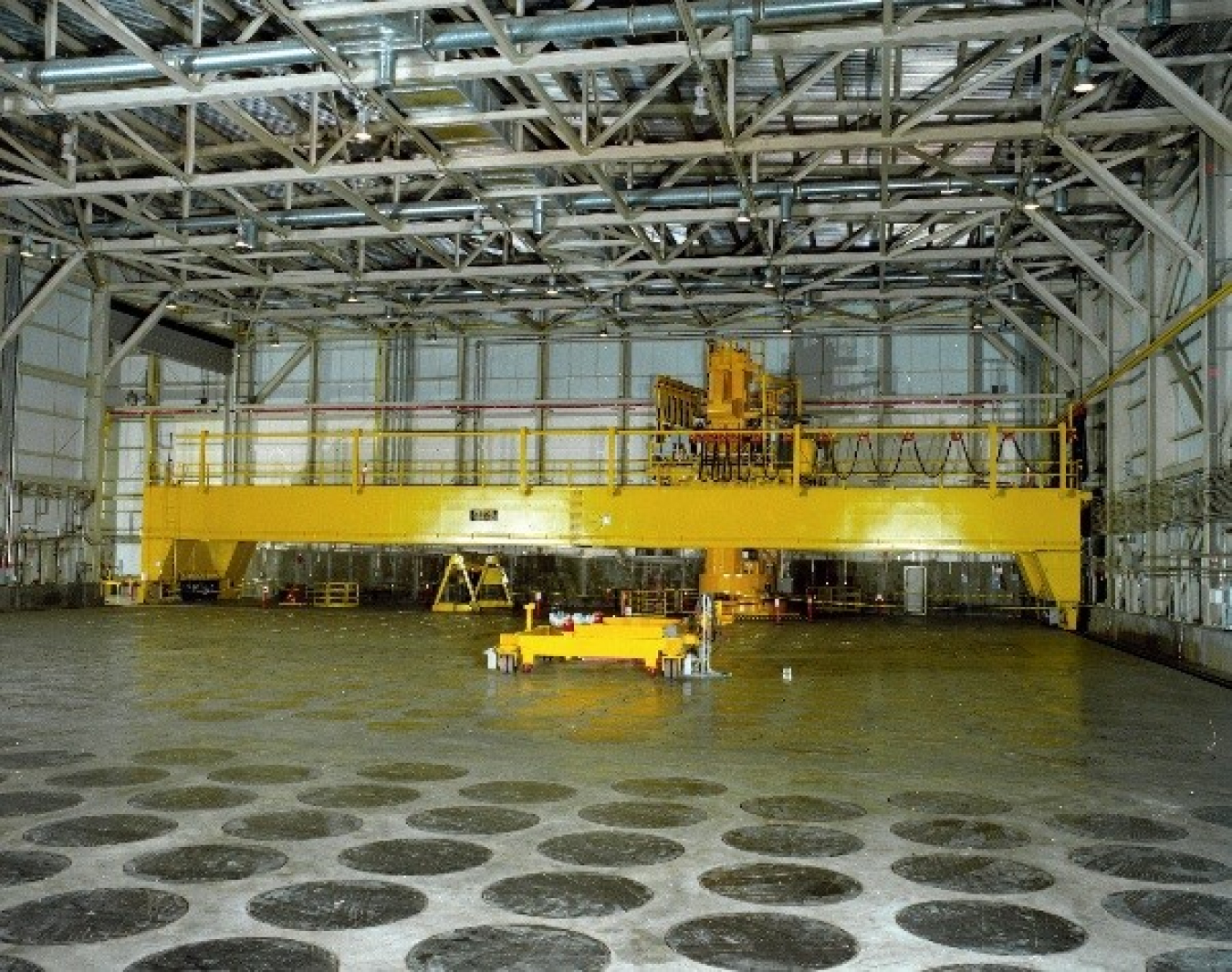
EM works with stakeholders and tribal governments to ensure protection of the environment and the health and safety of workers and the public by fully complying with applicable federal, state and local laws, orders and regulations.
In compliance with the National Environmental Policy Act, a decision was made in 1995 to consolidate DOE managed SNF at existing DOE sites that have the skills, facilities and technologies to best handle the fuel. Based upon the 1995 Record of Decision and the associated environmental impact statement, DOE is temporarily storing its SNF at Hanford, SRS and INL, until a repository is completed. The Hanford Site retained most of its inventory of SNF. The remaining DOE SNF was consolidated at INL or SRS.
Breakdown of DOE-Managed SNF



Notes: Pie Chart data exclude naval fuel. All Ft. St. Vrain fuel is included in the INL numbers.

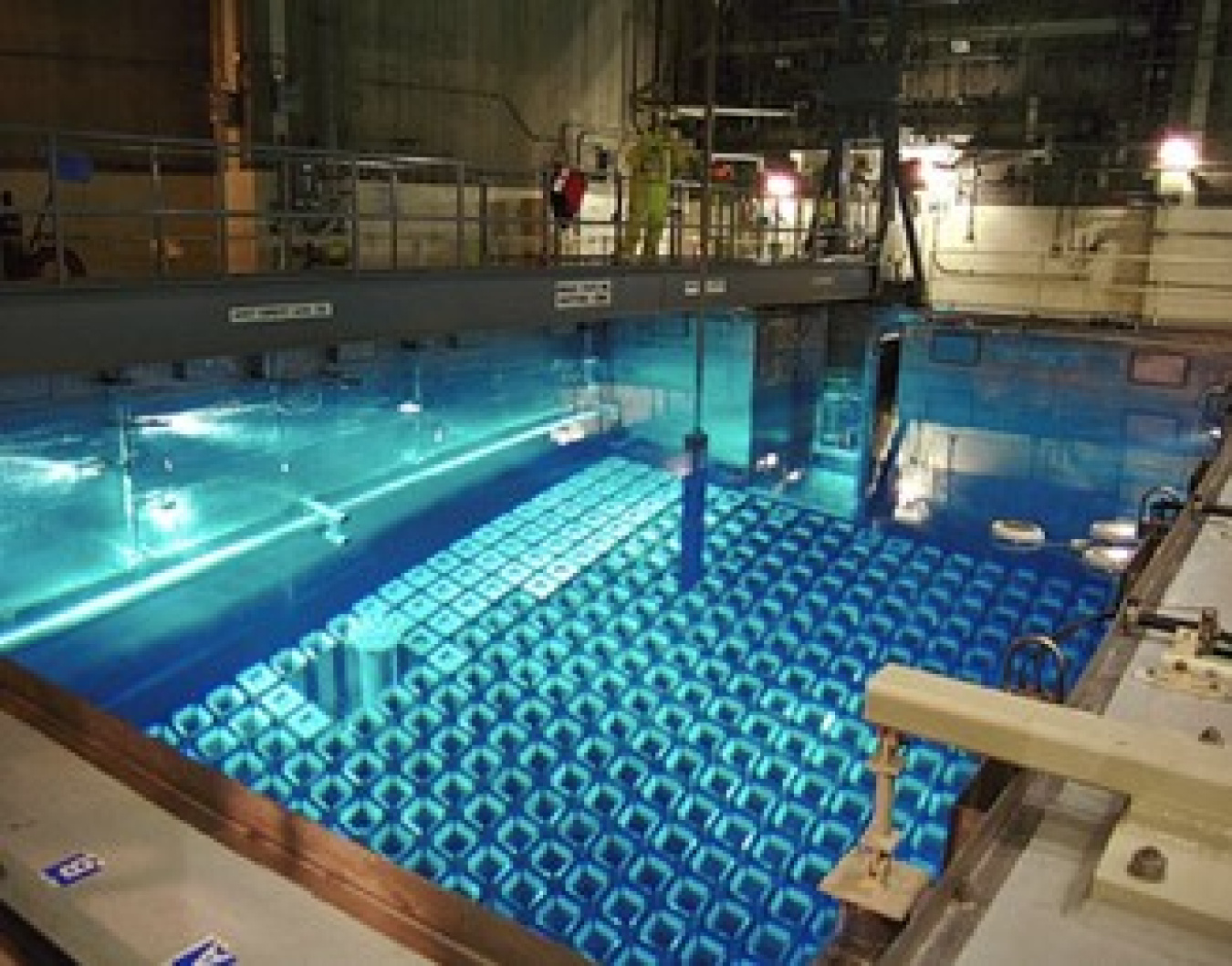
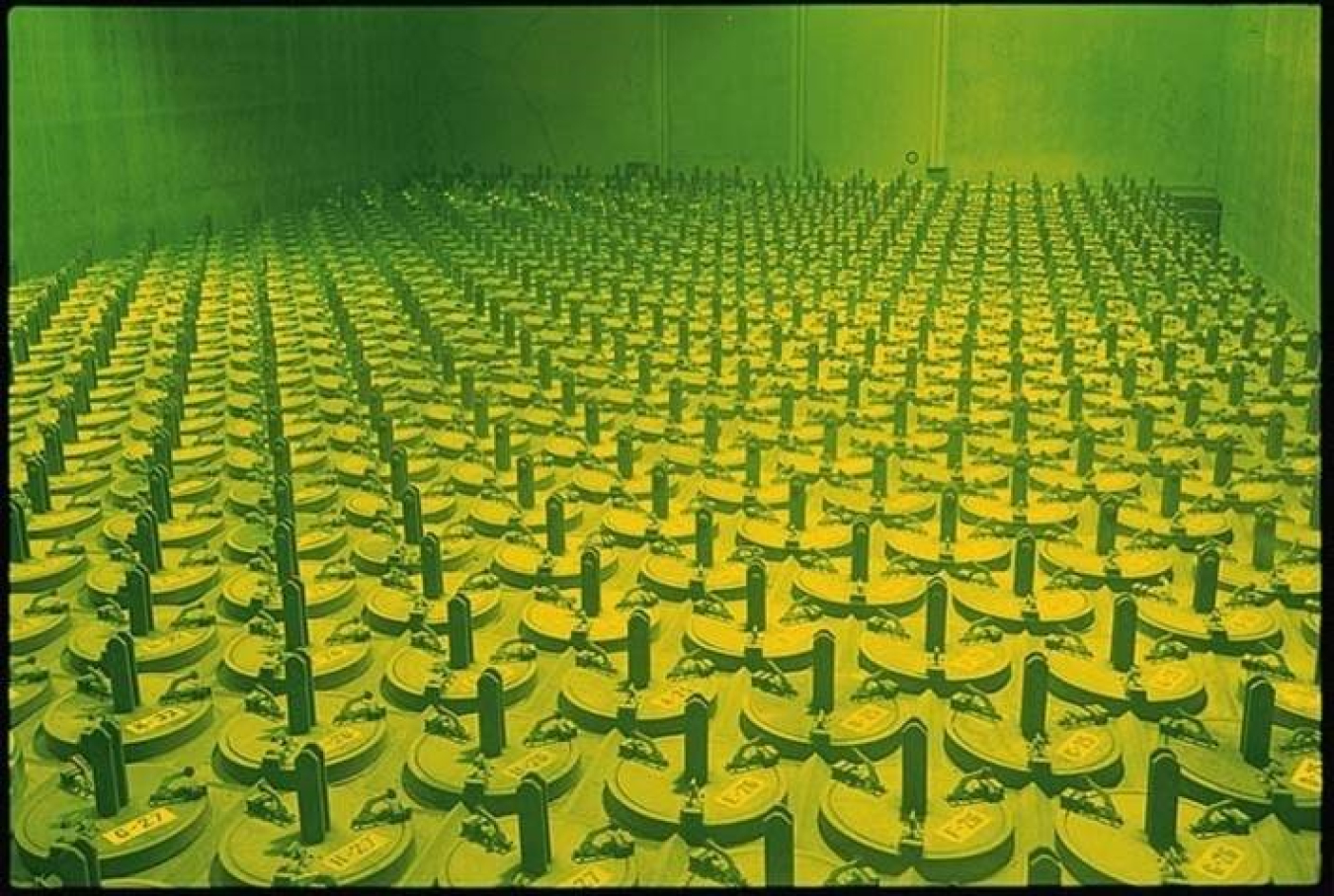
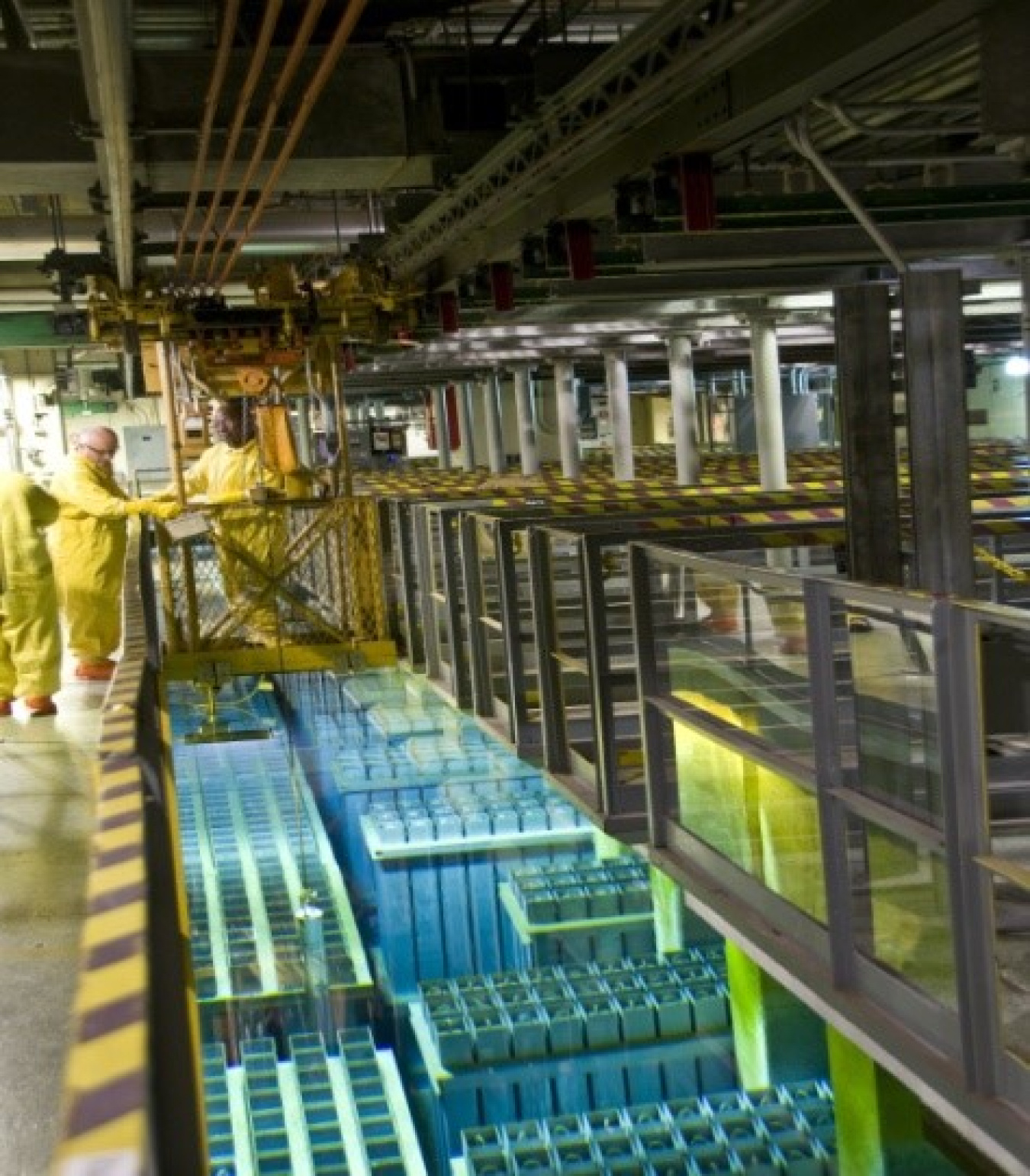
SNF storage at the Idaho Nuclear Technology and Engineering Center at Idaho National Laboratory is in five facilities that include wet, dry, below and above-ground storage configurations.
At Hanford, SNF has been consolidated in the Canister Storage Building and Interim Storage Area for safe interim storage.
SRS provides for the safe receipt and interim storage of SNF assemblies including SNF from domestic and foreign test and research reactors. The majority of SNF at SRS is stored in L Basin, a wet pool storage facility. The basin has concrete walls three feet thick and holds 3.5 million gallons of water with pool depths of 17-to-30 feet to provide shielding to protect workers from radiation. SNF from L-Basin has been processed through H-Canyon for final disposition for many years, and the process included recovery of highly enriched uranium (HEU) for potential future use. In April 2022, EM Senior Advisor William “Ike” White approved the Accelerated Basin De-inventory mission, which will allow SRS to process all remaining spent nuclear fuel in the L Basin storage area through H-Canyon without recovery of uranium, and immobilize the resulting dissolved material to be disposed in the future. The Amended Record of Decision for this mission can be found at: https://www.federalregister.gov/documents/2022/04/20/2022-08383/spent-nuclear-fuel-management-accelerated-basin-de-inventory-mission-for-h-canyon-at-the-savannah
The DOE Spent Nuclear Fuel Working Group (SNFWG), established in 2014, functions as a collaborative team to formulate and coordinate implementation of an effective and efficient management program for interim storage and ultimate disposition of DOE’s spent nuclear fuel. The working group is co-chaired by EM and the Office of Nuclear Energy (NE) and includes representatives from DOE programs and sites that manage SNF. They held meetings about twice a year at various locations in the complex through 2019, met virtually every few months 2020 through 2022, and reconvened in-person at the Idaho Operations Office in May of 2023.
For additional information, contact Jomaries Rovira, Director of EM’s Office of Nuclear Materials, at Jomaries.Rovira@em.doe.gov
